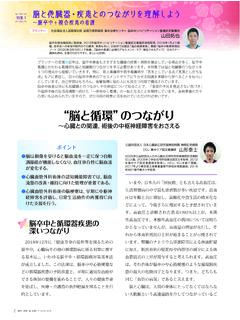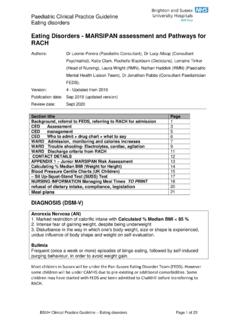Transcription of PATHO PHYSIOLOGY BIBLE - Simple Nursing
1 1 82% on Your Next Nursing Test PATHO PHYSIOLOGY BIBLE OVER 70 CONCEPT MAPS 2 82% on Your Next Nursing Test Contents NEURO: CNS .. 7 Alzheimer s disease .. 7 PLAN OF CARE: Safety/ LOC/ stress free .. 7 Path PHYSIOLOGY .. 7 Brain Tumors .. 8 Path PHYSIOLOGY .. 9 Cerebrovascular Accident (CVA) .. 10 PLAN OF CARE: neuro checks, pain Manage, decrease ICP, monitor RR, .. 10 Pathophysiology .. 10 Epilepsy .. 12 Pathophysiology .. 12 Head Injury .. 15 Pathophysiology .. 15 Traumatic Brain 15 Acquired Brain Injury .. 15 Multiple Sclerosis .. 17 Pathophysiology .. 17 Meningitis .. 19 Pathophysiology .. 19 Parkinson's Disease.
2 20 Pathophysiology .. 20 Seizures .. 23 Pathophysiology .. 23 Spinal Cord Injury .. 26 Pathophysiology .. 26 NEURO: PNS .. 27 Guillain-Barre Syndrome .. 27 Pathophysiology .. 27 Myasthenia Gravis .. 29 Pathophysiology .. 29 Gastro Intestinal (Upper) .. 30 Esophageal Disorders .. 30 Pathophysiology .. 30 Gastritis .. 32 Pathophysiology .. 32 Gastroesphageal Reflux Disease (GERD) .. 33 Pathophysiology .. 33 Hiatial Hernia .. 35 Pathophysiology .. 35 Peptic Ulcer Disease .. 37 Pathophysiology .. 37 Gastro Intestinal (Lower) .. 39 Appendicitis .. 39 Pathophysiology .. 39 3 82% on Your Next Nursing Test Small Bowel Obstruction (SBO).
3 41 Pathophysiology .. 41 Constipation .. 42 Pathophysiology .. 42 Causes of constipation: .. 42 Hernia .. 44 Pathophysiology .. 44 Symptoms of a hiatal hernia .. 44 Symptoms of inguinal and femoral hernias .. 44 Symptoms of an umbilical hernia .. 45 Symptoms of a congenital diaphragmatic hernia .. 45 Paralytic Illius .. 45 Pathophysiology .. 46 Causes of paralytic ileus .. 46 Ishemic Bowel .. 47 Pathophysiology .. 47 Volvulus .. 49 Pathophysiology .. 49 Diverticulitis .. 50 Pathophysiology .. 50 Resection of Intestines .. 52 Description .. 52 Why the Procedure is Performed .. 53 Risks .. 53 Inflammatory Bowel Disease .. 53 Pathophysiology.
4 53 Colorectal 55 Pathophysiology .. 55 Dukes s Classification of Colorectal Cancer .. 56 Orthopedics (BONES) .. 57 Hip Fracture .. 57 Pathophysiology .. 57 Total Knee Replacement (TKR).. 59 Pathophysiology .. 59 Long Bone Injury .. 59 Pathophysiology .. 59 Osteoarthritis (OA) .. 62 Pathophysiology .. 62 Etiology And Pathophysiology .. 62 Rheumatoid Arthritis (RA).. 64 Pathophysiology .. 64 Gout .. 65 Pathophysiology .. 65 Vascular Disorders .. 67 Peripheral Artery Disease (PAD) .. 67 Pathophysiology .. 67 4 82% on Your Next Nursing Test Peripheral Vein Disease (PVD) .. 67 Pathophysiology .. 67 Aneurysms .. 68 Pathophysiology.
5 68 I. Aortic Aneurysms: .. 69 II. Cerebral Aneurysm: Signs and symptoms of cerebral aneurysm are: .. 69 III. Peripheral Aneurysm: Signs and symptoms of peripheral aneurysm are as follows: .. 69 Respiratory .. 70 Bronchial Asthma .. 70 Pathophysiology .. 70 Bronchitis .. 71 Pathophysiology .. 71 Chronic Obstructive Pulmonary Disease (COPD) .. 72 Pathophysiology .. 72 74 Pathophysiology .. 74 Hemothorax .. 75 Pathophysiology .. 75 Pneumonia .. 77 Pathophysiology .. 77 80 Pathophysiology .. 80 Pulmonary Embolism .. 81 Pathophysiology .. 81 Respiratory 84 Pathophysiology .. 84 Tuberculosis (TB) .. 85 Pathophysiology .. 85 Upper Respiratory Infection (URI ).
6 86 Pathophysiology .. 86 CARDIAC (HEART) .. 87 Angina .. 87 Pathophysiology .. 87 Arrhythmias .. 89 Pathophysiology .. 89 Acute Coronary Syndrome (ACS .. 90 Pathophysiology .. 90 Atrial Fibrillation (AFIB) .. 92 Pathophysiology .. 92 Cardiogenic 93 Pathophysiology .. 93 Coronary Artery Bypass Graft (CABG).. 95 Pathophysiology .. 95 Congestive Heart Failure (CHF) .. 96 Pathophysiology .. 96 5 82% on Your Next Nursing Test Coronary Artery Disease (CAD) .. 98 Pathophysiology .. 98 Hypertension (HTN) .. 101 Pathophysiology .. 101 Central Nervous System .. 101 Cardiovascular System .. 101 Renal System .. 101 Renin-Angiotensin-Aldosterone system.)
7 101 Hyperlipidemia (high cholestrol) .. 103 Pathophysiology .. 103 Myocardial Infarction .. 103 Pathophysiology .. 103 Pulmonary 105 Pathophysiology .. 105 Valvular Heart Diseas .. 106 Pathophysiology .. 106 Endocrine .. 108 Diabetes Mellitus Type 1 .. 108 Pathophysiology .. 108 Diabetes Mellitus Type 2 .. 110 Pathophysiology .. 110 Hyperglycemia .. 111 Pathophysiology .. 111 Hypoglycemia .. 114 Pathophysiology .. 114 Diabetic Ketone Acidosis (DKA) .. 117 Pathophysiology .. 117 Gallbladder, Liver & Appendix .. 117 Appendicitis .. 118 Pathophysiology .. 118 Cholecystitis .. 119 Pathophysiology .. 119 Acute Cholecystitis Pathophysiology.
8 119 Acalculous Cholecystitis Pathophysiology .. 119 Hepatitis .. 121 Pathophysiology .. 121 Pancreatitis .. 123 Pathophysiology .. 123 Kidney (RENAL) .. 124 ARF (Acute Renal Failure).. 124 Pathophysiology .. 124 The clinical course of ARF is characterized by the following three phases: . 125 Phase 1. Onset .. 125 Phase 2. Maintenance .. 125 Phase 3. 125 CRF (Chronic Renal Failure) .. 127 6 82% on Your Next Nursing Test Pathophysiology .. 127 Nephrotic Syndrome .. 130 Pathophysiology .. 130 Kindey Stone (Calculi) .. 131 Pathophysiology .. 131 Glomerulonephritis .. 133 Pathophysiology .. 133 Transurethral Resection of Prostate (TURP).
9 134 Pathophysiology .. 134 UTI (urinary tract infection) .. 136 Pathophysiology .. 136 Benign Prostate Hypertrophy (BPH) .. 138 Pathophysiology .. 138 7 82% on Your Next Nursing Test NEURO: CNS Alzheimer s disease PLAN OF CARE: Safety/ LOC/ stress free Path PHYSIOLOGY The classic neuropathology findings in AD include amyloid plaques, neurofibrillary tangles, and synaptic and neuronal cell death. Granulovacuolar degeneration in the hippocampus and amyloid deposition in blood vessels might also be seen on tissue examination, but they are not required for the diagnosis Signs & Symptoms Early o Subtle changes such as forgetfulness o recent memory loss o poor concentration Late o Severe memory loss o Inability to hold a conversation o Inability to think abstractly or formulate concepts o Poor hygiene and grooming o Inappropriate dress o Inability to perform instrumental activities of daily living Behavioral changes o Depression o Anxiety o Wandering o Impulsive behavior o Catastrophic reactions o Imitation o Emotional liability o Withdrawal Nursing Dx Nursing Intervention Rationale Goal Impaired
10 Thought processes related to decline in cognitive function Risk for injury related to decline in cognitive function Anxiety related to Provide initial and ongoing assessments Administer prescribed medications. Maximize effective communication Impairment of visual perception increases the risk of falling. Identify potential risks in the environment and heighten awareness so that caregivers Creating living conditions that are as stress-free as possible will help keep the patient calm and help strengthen his cognitive abilities, 8 82% on Your Next Nursing Test confused thought processes Imbalanced nutrition.





